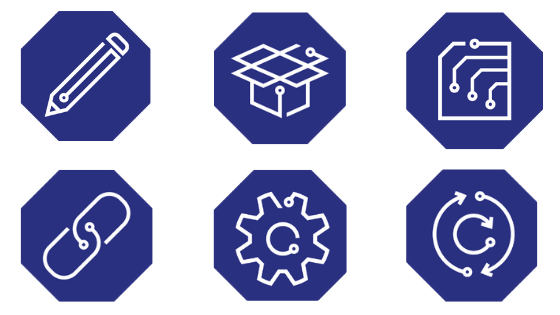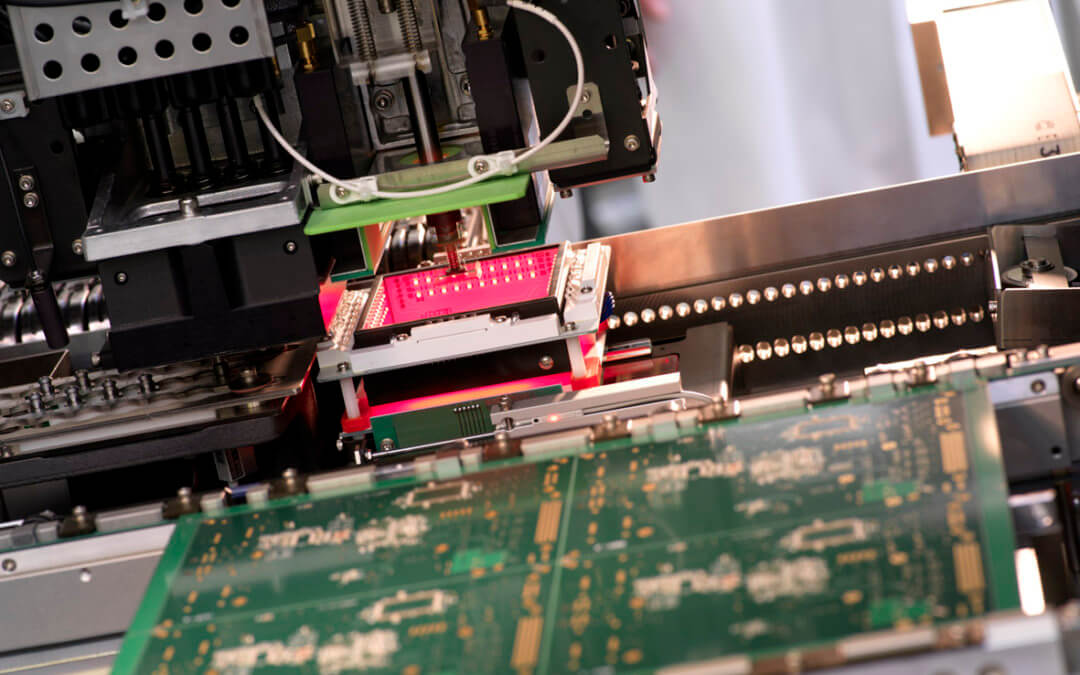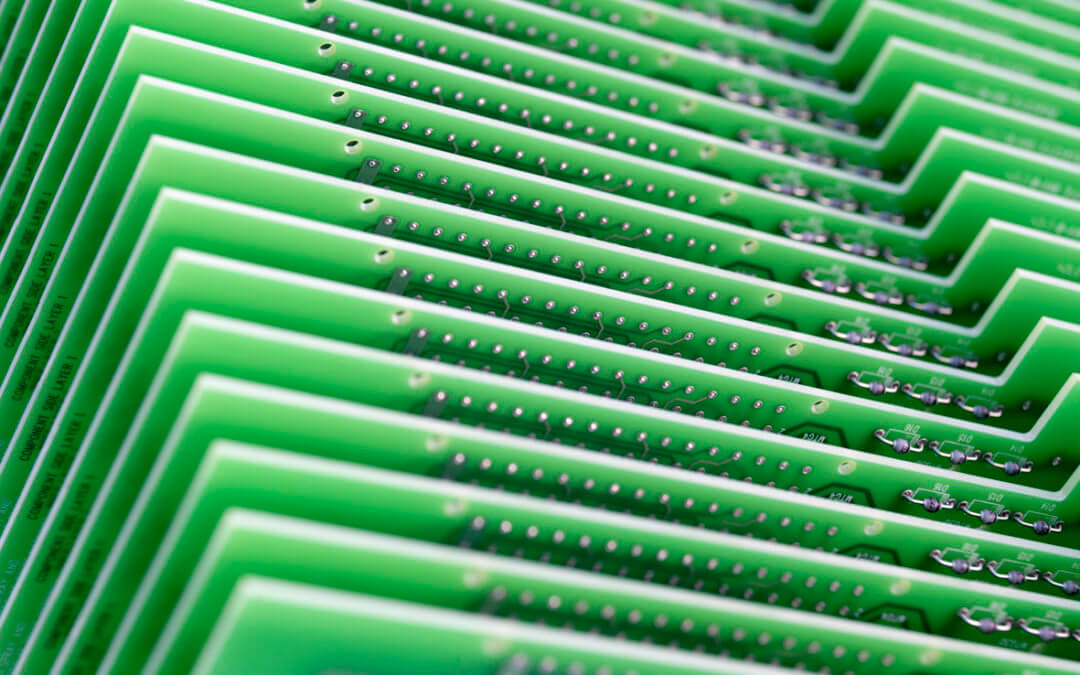Every product we own, desire or leave on the shelf has its own story. From being a mere twinkle in its designer’s eye to the sad day when its parts are being recycled for newer, more exciting models, there is always a myriad of processes and considerations that go into creating that product.
But what’s actually involved in making a product?
Here’s our step-by-step guide to the six stages involved in every product’s lifecycle, from concept to obsolescence and how choosing the right manufacturing partner can make these steps easier to manage.
1. Design: Defining the idea
 Designing a product is never simple. When that product contains complex electronic circuits and components, the design process is even more complicated, needing to take into account the following considerations:
Designing a product is never simple. When that product contains complex electronic circuits and components, the design process is even more complicated, needing to take into account the following considerations:
- Component selection. It is easy to default to known, and previously used, families of parts but the market is volatile and subject to change. It’s vital to determine whether selections are truly optimal for sustainable supply across the entire product lifecycle.
- Which materials can withstand the conditions the product will be used in, for example hostile, hazardous or security sensitive environments.
- The design will meet functionality requirements, but is the construction design effective and facilitate use of the latest manufacturing automation?
- How the product can deliver both optimal function AND cost-efficiency
Using a manufacturing partner skilled in Design for Manufacture (DfM) will help to ensure that whatever solution is chosen will be cost-effective and adhere to the Bill of Materials (BoM)
However, it’s also important to incorporate processes that will enable a smooth manufacturing operation. Influencing the design while it is still fluid is crucial so difficult and costly decisions don’t need to be taken later in the process.
An EMS partner can work with customer teams to devise design packages and create documentation such as Gerber data, or take developed packages and get them ready for the the later stages of manufacturing.
Whatever stage they become involved at, the NPI engineers’ priority will be to take a customer’s concept and turn it into a tangible plan for volume manufacture.
2. New Product Introduction (NPI): Turning plans into process
 NPI is arguably not a single step on its own, but rather an enabler for the rest of the manufacturing process, but it deserves the number 2 spot in this list as what comes next in the product lifecycle cannot be achieved without it.
NPI is arguably not a single step on its own, but rather an enabler for the rest of the manufacturing process, but it deserves the number 2 spot in this list as what comes next in the product lifecycle cannot be achieved without it.
It is at the NPI stage that the ideas that were developed and shaped during the design stage can be turned into workable processes. The initial plans are transformed into the building blocks for the manufacture itself, paving the way for the physical build of the product.
As supply chains get tighter, processes get stricter and timescales get shorter, global manufacturers are competing to satisfy the requirements of savvier, more demanding consumers.
Meeting these challenges head on is crucial to the NPI process, which demands a smooth transition from the design phase, into manufacturing and finally out to market.
The NPI engineering team will collaborate with customers on any aspect of data translation, documentation, design, assembly and test to create an optimal package, with stages formally validated at each gate.
3. Rapid Prototyping: Enabling a smooth transition to manufacture
 Every new electronic product needs to be tried and tested before being launched to market. Rapid prototyping is the quickest and most seamless way to reduce the speed to ramp, while maintaining product quality and lowering costs.
Every new electronic product needs to be tried and tested before being launched to market. Rapid prototyping is the quickest and most seamless way to reduce the speed to ramp, while maintaining product quality and lowering costs.
Product and circuitry tests conducted early in the manufacturing journey are not only better for our customers, but mean that products can be modified quicker and out to market faster.
Software development is often delayed until a working hardware platform becomes available, so the prototypes are needed beforehand.
Rapid prototyping doesn’t just benefit customers who need a working version of their product to validate that the circuits function perfectly; it also shows design teams that the circuits fit into the size and space required, which then can be vigorously tested and qualified to meet regulatory requirements.
It’s best to use the same equipment for prototyping that you will use for volume production, so you can check the product’s readiness for large scale manufacturing and pave the way for a smooth transition.
4. Supply Chain Management: Establishing sustainable sourcing procedures
 Setting up a supply chain that will guarantee on-time delivery, cost savings and sustainability of components is crucial when preparing any product for a smooth route to market.
Setting up a supply chain that will guarantee on-time delivery, cost savings and sustainability of components is crucial when preparing any product for a smooth route to market.
Once prototypes have been approved and testing is complete, establishing the correct sourcing solutions is a vital step in the product lifecycle. From choosing the best suppliers for each component to auditing each supplier and testing their capabilities, it’s hugely important to make these preparations before volume manufacturing can begin.
EMS partners need to understand the following before they can start to establish the best sourcing options for each product and customer:
- Product lifecycles
- Timeframes
- Urgency
- Quantities required
Additionally, it’s important to know if products need to meet certain standards, for example, if they have to be built to military grades or other strict regulations. Market conditions and current component stocks will also affect where and when you begin your sourcing journey.
5. Volume manufacturing: Combining intelligent solutions with optimal process
 The ‘manufacturing’ part of the process only comes when the previous steps have been taken: managing the actual production lines and taking the product through to fulfilment and shipping is (almost) the final piece of the puzzle.
The ‘manufacturing’ part of the process only comes when the previous steps have been taken: managing the actual production lines and taking the product through to fulfilment and shipping is (almost) the final piece of the puzzle.
The ins and outs of the manufacturing process itself are countless, from specific techniques involved such as surface mount and through hole assembly and specialised services such as conformal coating and complex solderwork.
Each customer and each product requires a different combination of processes, techniques, testing and analysis throughout the manufacturing stage to ensure it is fit for the end-user.
Once sub-assembly build is complete, systems integration stages such as box build, electro-mechanical assembly, wiring, firmware programming/software upload, test, configuration and encapsulation can then take place to “create” an actual product.
Before shipping, comprehensive inspection and packaging is applied to ensure products are ready to be delivered to their ultimate destination.
6. Legacy products
 Managing the end of life of a product is an essential part of the wider lifecycle support system that an EMS partner will provide its customers, from concept to the legacy stage.
Managing the end of life of a product is an essential part of the wider lifecycle support system that an EMS partner will provide its customers, from concept to the legacy stage.
Lifecycle support also includes crucial services such as returns management, repairs and warranty management, all of which can be undertaken or overseen by an EMS partner.
Managing a product decline can be tricky, as volumes start to reduce and materials become difficult to source, especially if the product is an older model using components which may now be bulky, outdated or simply hard to get hold of.
It’s not just the components either; older tooling and equipment may wear down over time and if fewer products require their use, it can be costly and ineffective to replace them.
Different solutions can be applied to end of life situations: some products get superseded by newer models or versions, meaning only slight tweaks to the manufacturing and sourcing procedures.
Other products may simply need support as they dwindle, which can involve investing in enough stock and parts to last the predicted period before they are withdrawn from the market.
It’s vital that all parties understand the market and technological dynamics that can lead to physical parts being renumbered following a change in supplier or manufacturer. Once again this requires in-depth knowledge and monitoring of the entire supply chain.
By working with a manufacturing partner which is dedicated to monitoring the market for signs of change and has the knowledge to react to this and find suitable alternative routes, this process can be managed effectively without compromising timescales or cost.










